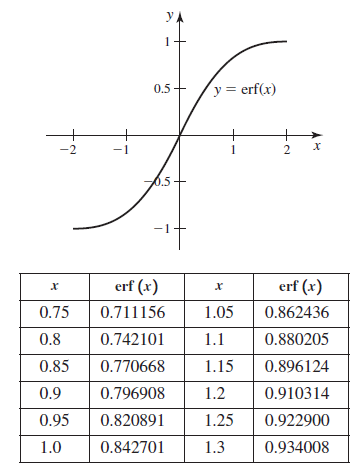Assuming the limit exists, the definition of the derivative If h > 0, then this approximation is
Question:
Assuming the limit exists, the definition of the derivative

implies that if h is small, then an approximation to f'(a) is given by

If h > 0, then this approximation is called a forward difference quotient; if h < 0, it is a backward difference quotient. As shown in the following exercises, these formulas are used to approximate f' at a point when f is a complicated function or when f is represented by a set of data points.
The error function (denoted erf 1x2) is an important function in statistics
because it is related to the normal distribution. Its graph is shown
in the figure, and values at several points are shown in the table.

a. Use forward and centered difference quotients to find approximations to 
b. Given that  compute the error in the approximations in part (a).
compute the error in the approximations in part (a).
Step by Step Answer:

Calculus Early Transcendentals
ISBN: 978-0321947345
2nd edition
Authors: William L. Briggs, Lyle Cochran, Bernard Gillett





